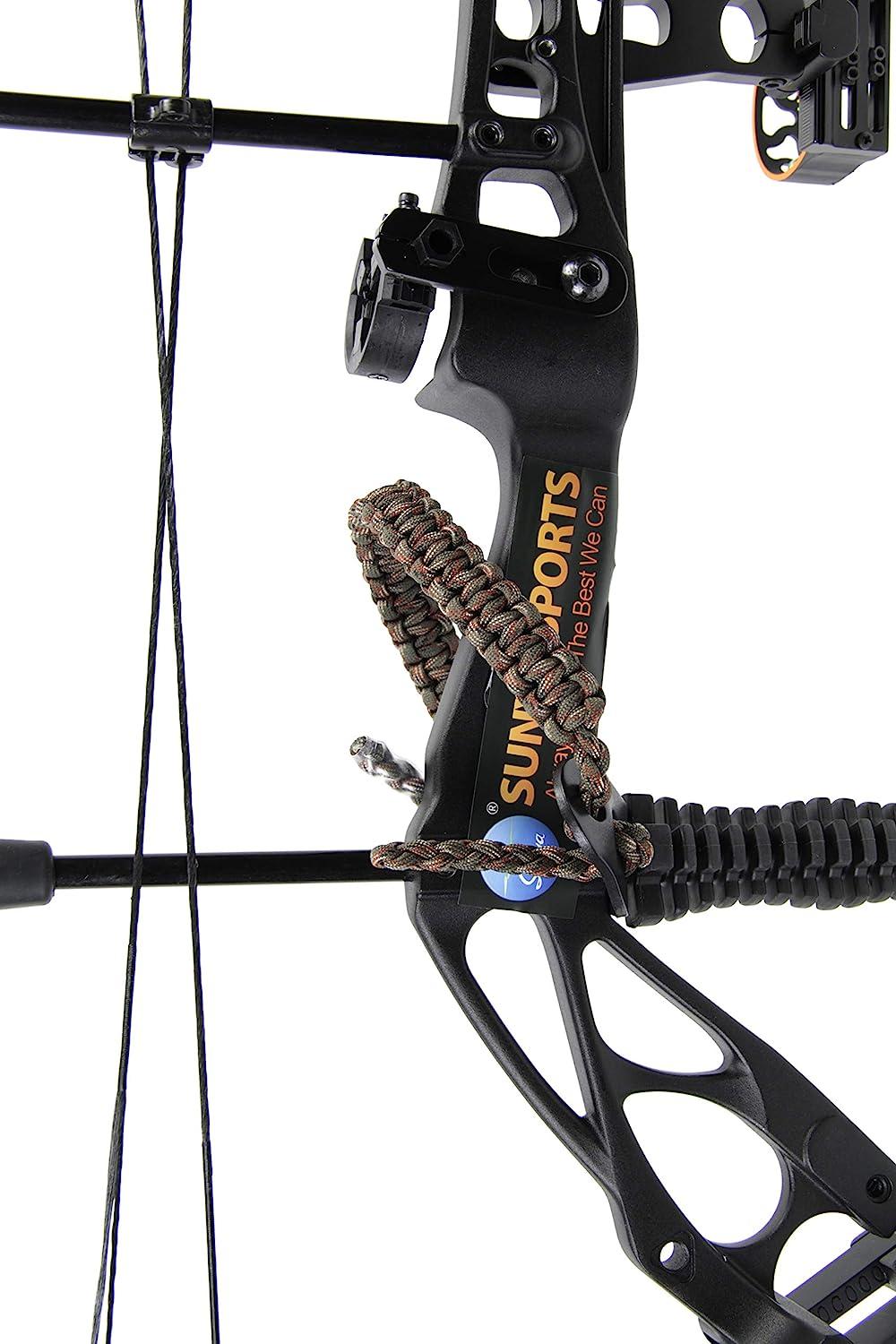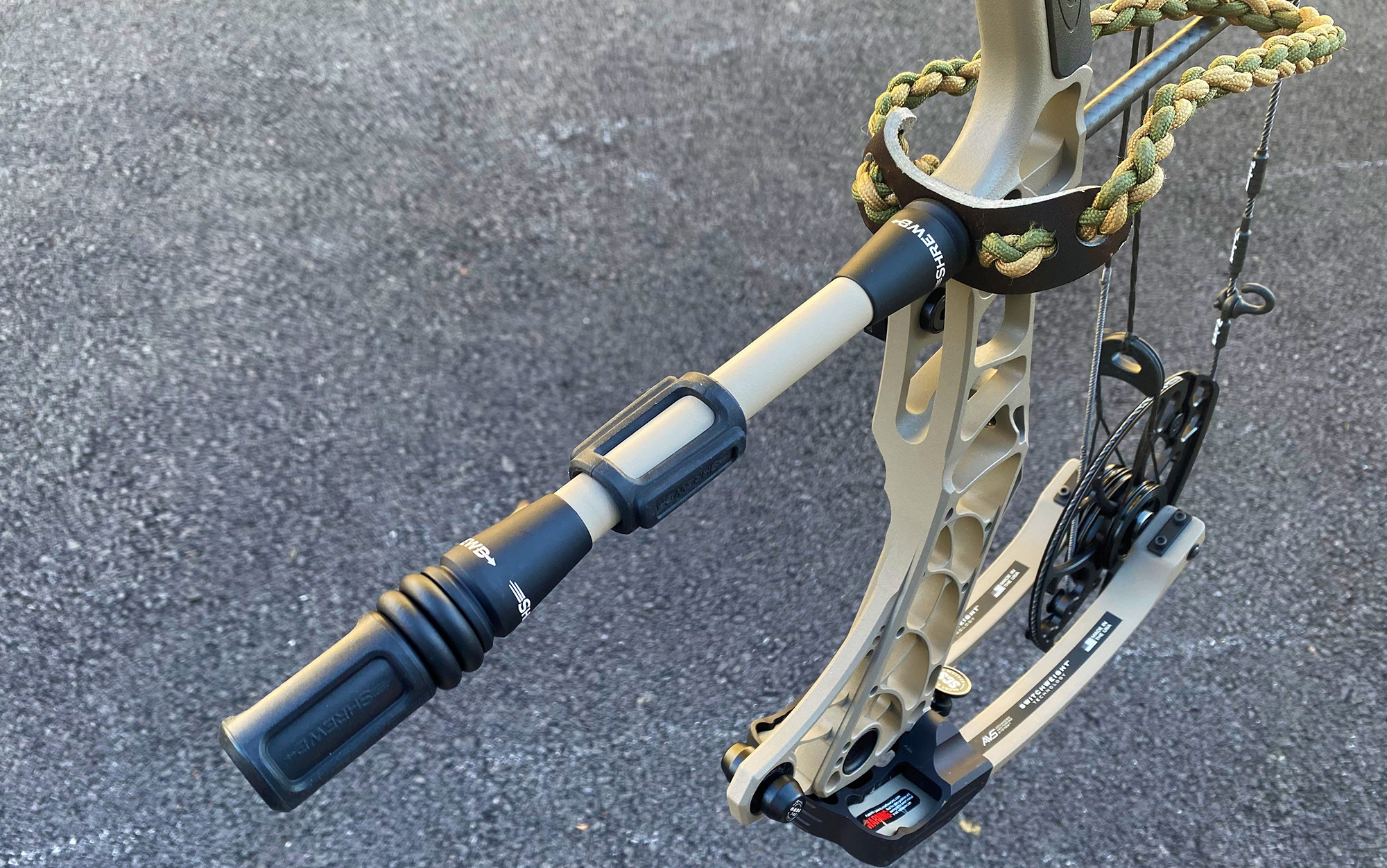Bow Stabilizer Purchasing Overview: Whatever You Required to Know Before You Purchase
Bow Stabilizer Purchasing Overview: Whatever You Required to Know Before You Purchase
Blog Article
Increase Your Archery Efficiency: The Ultimate Overview to Bow Stabilizer Arrangement
Enhancing your archery performance needs a meticulous technique to every element of your devices configuration. Amongst the different elements that add to accuracy and security, the bow stabilizer plays a crucial duty in improving your shot implementation. Recognizing just how to enhance your bow stabilizer configuration can cause considerable improvements in your overall accuracy and consistency on the variety or in the field. As we look into the ins and outs of choosing the best stabilizer weight, positioning, and fine-tuning strategies, you will discover the key to opening your complete capacity as an archer.
Comprehending Bow Stabilizers
In the realm of archery equipment, the role and function of bow stabilizers stand as important components for enhancing shooting accuracy and stability. Bow stabilizers are made to lessen bow torque, reduce resonances, and assist in holding the bow steady throughout the aiming and launch process. By connecting a bow stabilizer to the riser of the bow, archers can experience enhanced balance and lowered hand shock, leading to even more constant and precise shots.
The key function of a bow stabilizer is to wet any type of resonances that happen upon releasing the arrowhead. This decrease in vibration not just enhances the shooter's convenience however additionally assists keep focus and control throughout the shot cycle. Furthermore, bow stabilizers aid in counterbalancing the weight of devices affixed to the bow, such as views, quivers, and arrowhead rests, guaranteeing optimum weight distribution for enhanced security.
Understanding the auto mechanics and advantages of bow stabilizers is vital for archers looking to tweak their shooting efficiency and achieve greater accuracy on the array or in the field.

Selecting the Right Stabilizer Weight
Selecting the suitable weight for your bow stabilizer is an essential aspect of optimizing your archery configuration for enhanced capturing performance. The stabilizer weight directly influences how successfully the stabilizer lowers vibration and maintains your bow during the shot. When choosing the ideal stabilizer weight, it's important to consider your capturing design, bow equilibrium, and individual choices.
Lighter stabilizers, generally weighing between 3-6 ounces, are favored by archers that focus on maneuverability and quick target procurement. These stabilizers are suitable for hunters or those who shoot in tough surfaces where mobility is essential. On the other hand, heavier stabilizers, varying from 8-12 ounces or more, are liked by target archers looking for optimum security and reduced bow activity. The added weight aids hold the bow steadier during the aiming process and minimizes the impacts of torque on the bow.
Inevitably, the best stabilizer weight for you will certainly rely on your shooting objectives and choices. Try out different weights and finding the one that offers the optimum equilibrium of security and maneuverability is essential to enhancing your archery performance.
Installing Your Bow Stabilizer
To correctly install your bow stabilizer, guarantee that you have all the essential tools and comply with these detailed directions for a protected and effective arrangement. Start by determining the front stabilizer bushing on your bow riser. Many bows have pre-threaded holes for stabilizer setup. Next off, apply a tiny amount of bowstring wax to the threads of the stabilizer screw to avoid it from loosening up during usage.
Meticulously thread the stabilizer into the front bushing by hand, making certain not to cross-thread it (bow stabilizer). When the stabilizer is snugly in location, use an appropriate wrench to tighten it firmly. Avoid over-tightening, as this can cause damage to the bow or stabilizer
After setting up the stabilizer, check to ensure it is straight and aligned with the bow. Some stabilizers include flexible weights or dampeners; change these according to your preferences and shooting design. Examination the bow to make sure the stabilizer is efficiently reducing resonance and improving your shot uniformity.
Adjusting Stabilizer Position for Precision
After setting up the bow stabilizer firmly, optimizing its setting is crucial for improving precision in your shooting. The position of the stabilizer can dramatically influence the equilibrium and security of your bow during the shot cycle. To change the stabilizer for optimum accuracy, beginning by try out different positions. Moving the stabilizer more detailed to the riser can help lower the bow's general weight circulation, possibly enhancing your intending security. On the other hand, extending the stabilizer better you can check here out can enhance the bow's mercy and lower the impacts of torque on the shot.
When readjusting the stabilizer setting, consider the kind of shooting you do. For target archery, a longer stabilizer placed additionally out may be advantageous for included security during the aiming process - bow stabilizer.
Fine-Tuning Your Stabilizer Configuration

In addition, think about the positioning of any type of dampeners or weights along the stabilizer rod. Moving these parts closer to or further from the riser can alter the stabilizer's total effect on your bow's equilibrium. Fine-tuning these details can assist lower vibration, reduce hand Check Out Your URL shock, and enhance total control during the shot execution.
Frequently reassess your stabilizer setup as your capturing method progresses to ensure it continues to complement your type and shooting goals. By finetuning your stabilizer setup with accuracy and treatment, you can enhance your bow's efficiency and boost your archery skills to brand-new heights.
Conclusion
Finally, optimizing your bow stabilizer configuration is important for boosting your archery efficiency. By comprehending the function of stabilizers, choosing the proper weight, appropriately setting up and placing the stabilizer, and fine-tuning its setup, you can improve your accuracy and consistency in shooting. Take the time to explore various setups and adjustments to discover the setup that functions finest for you and helps you attain your archery objectives.
Bow stabilizers are created to minimize bow torque, reduce vibrations, and assist in holding the bow constant throughout the intending and launch process. By connecting a bow stabilizer to the riser of the bow, archers can experience better balance and decreased hand shock, resulting in even more consistent and precise shots.

The stabilizer weight straight influences how efficiently the stabilizer reduces resonance and supports your bow throughout the shot. bow stabilizer. By comprehending the objective of stabilizers, selecting the ideal weight, appropriately placing the stabilizer and setting up, and adjust its arrangement, you can improve your precision and uniformity in capturing
Report this page